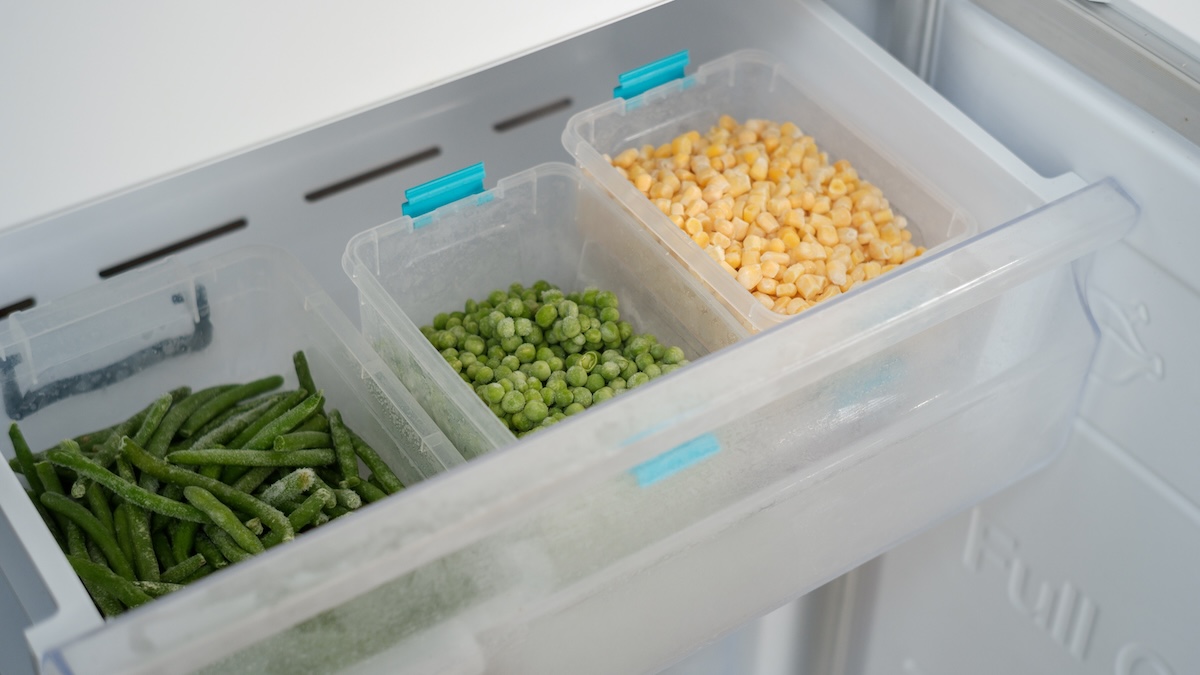When winter arrives, grocery shelves look a little different. The bright berries, juicy peaches, and garden greens of summer give way to heartier produce like root vegetables, citrus, and leafy greens.
Even though variety shrinks this time of year, you can still eat nutritious, flavorful meals without breaking the budget. The key is knowing which fruits and vegetables are in season — and how to make the most of frozen or canned options when fresh ones aren’t available.

What’s in Season During Winter?
Winter produce tends to be sturdy and nutrient-dense, full of vitamins, fiber, and minerals that support your immune system and heart health.
🍎 Fruits that shine in winter:
- Oranges, mandarins, grapefruit, and lemons: rich in vitamin C to support immunity.
- Apples and pears: full of fiber and great for steady blood sugar.
- Kiwi and pomegranate: small but packed with antioxidants.
🥬 Vegetables to reach for:
- Cabbage, kale, and collard greens: provide fiber, potassium, and vitamin K.
- Carrots, sweet potatoes, and winter squash: colorful and naturally sweet without added sugar.
- Beets, turnips, and parsnips: hearty root vegetables that add flavor and minerals to soups or roasts.
Stretching Your Produce Budget
Fresh produce can be pricier in winter, but there are simple ways to save.
- Buy what’s in season locally. Prices drop when produce doesn’t need to travel far.
- Choose “imperfect” produce. Misshapen fruits and veggies are just as nutritious, often at a lower cost.
- Plan around sales and store brands. Frozen vegetables often go on sale and have just as much nutrition as fresh.
Frozen and Canned Options Can Be Just as Healthy
Don’t skip the frozen aisle — it’s your best friend in the colder months.
❄️ Frozen produce:
- Picked at peak ripeness and flash-frozen, locking in nutrients.
- Great for smoothies, soups, and stir-fries.
- Choose plain versions without added salt, sugar, or sauces. Check the Nutrition Facts label to compare brands and pick the healthiest option.
🥫 Canned produce:
- Convenient and shelf-stable for quick meals.
- Look for “no salt added” or “packed in water” labels.
- Drain and rinse canned beans or vegetables to remove extra sodium.

Combine Fresh, Frozen, and Canned for the Best of All Worlds
Mix and match depending on what’s affordable and available.
- Add fresh greens to a frozen vegetable stir-fry for color and crunch.
- Combine fresh citrus with canned beans in a quick salad.
- Use frozen berries in oatmeal or yogurt for natural sweetness year-round.

Takeaways
Winter might limit produce variety, but it doesn’t have to limit your nutrition.
- Choose seasonal fruits and vegetables for the best value and flavor.
- Keep frozen and canned options on hand for convenience.
- Mix and match to build colorful, nutrient-rich meals that support heart and blood sugar health all year long.
Eating well in winter is all about flexibility, and every meal can still be nourishing, affordable, and satisfying.



